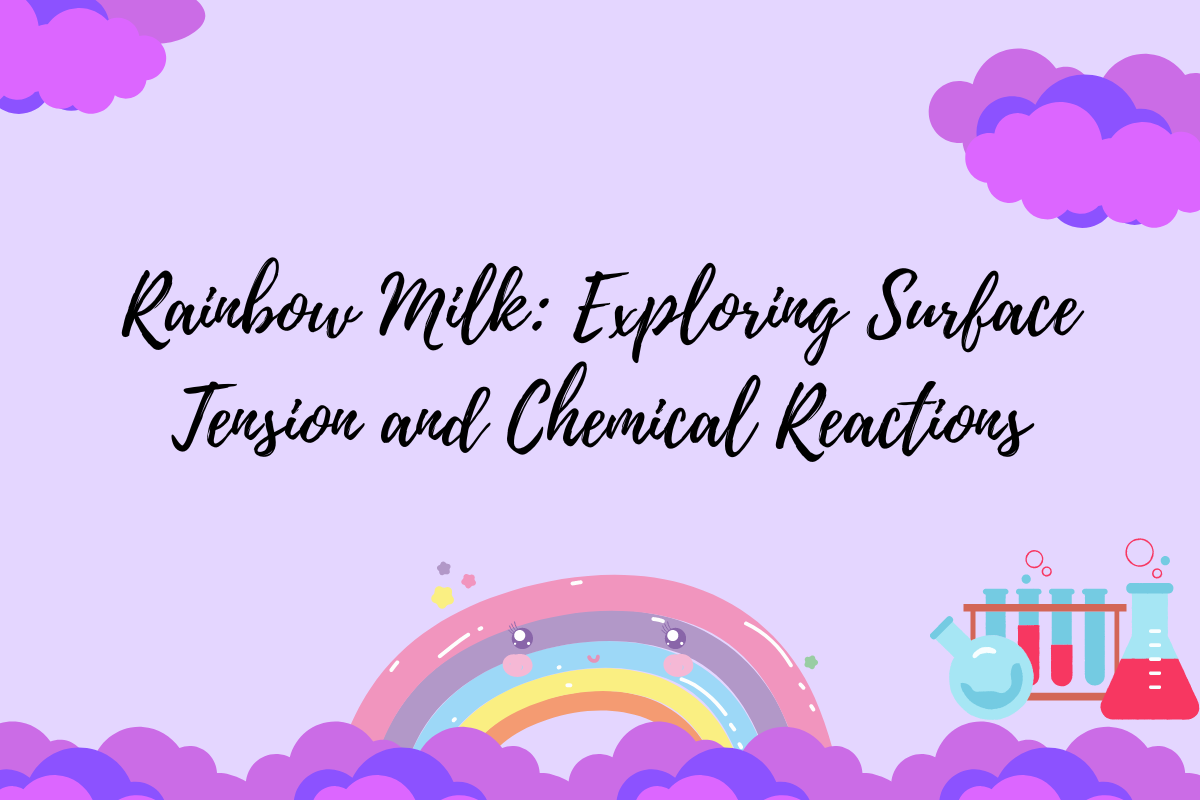Rainbow Milk: Exploring Surface Tension and Chemical Reactions
By~ Scholar Planet
Created At: 12 Aug, 2023

Science experiments have an
amazing ability to captivate our curiosity and provide insights into the
fascinating world around us. One such experiment that never fails to awe both
kids and adults alike is the "Rainbow Milk" experiment. This captivating
activity combines surface tension and chemical reactions to create a
mesmerizing display of swirling colours on the surface of milk.
Materials You'll Need:
- Whole milk
- Dish soap (liquid)
- Food colouring (various
colours)
- Plate or shallow dish
- Cotton swabs or toothpicks
The Science Behind the Magic:
Before we dive into the colourful
spectacle, let's understand the science behind it. Milk contains fat molecules
that are suspended in water. These molecules are sensitive to changes in the
surface tension of the liquid. Surface tension is the force that holds the
molecules of a liquid together at its surface. When you add a drop of soap to
milk, it disrupts the surface tension and causes the fat molecules to move
around.
Creating the Rainbow: Step by
Step:
1. Pour enough milk to cover the
bottom of the plate or dish.
2. Add drops of food colouring to
the milk. Space the drops out, using different colours.
3. Dip a cotton swab or toothpick
into the liquid dish soap.
4. Touch the coated swab to the
center of the milk and observe the magic unfold.
As the soap comes in contact with
the milk, it starts to break the surface tension and interact with the fat
molecules. This interaction creates a swirling motion, causing the colours to
mix and dance. The result is a beautiful and dynamic display of rainbow-like
patterns forming on the surface of the milk.
The Experiment's Teachable
Moments:
1. Surface Tension: The
experiment provides a hands-on way to understand surface tension. It shows how
the soap disrupts the surface tension by breaking down the forces that hold the
milk molecules together.
2. Chemical Reactions: The
interaction between the soap and the milk's fat molecules is a chemical
reaction. This showcases how substances can react and produce observable
changes in their properties.
3. Colour Mixing: The experiment
visually demonstrates the principles of colour mixing. As the colours blend and
move, it's a tangible example of how primary colours can combine to form
secondary and tertiary colours.
4. Scientific Observation:
Encouraging participants to carefully observe the changing patterns on the
milk's surface promotes scientific observation skills. This skill is crucial
for making discoveries and drawing conclusions based on evidence.
5. Hands-On Learning: The experiment
makes science come alive through hands-on engagement. It fosters curiosity and
an understanding of scientific concepts in a fun and interactive manner.
Safety Considerations:
While this experiment is
generally safe, it's important to keep in mind a few safety tips:
- Avoid ingesting any part of the
experiment, especially the soap or coloured milk mixture.
- Wash hands thoroughly after
handling the materials.
Let the
rainbow milk experiment take you on a colourful journey through science!
